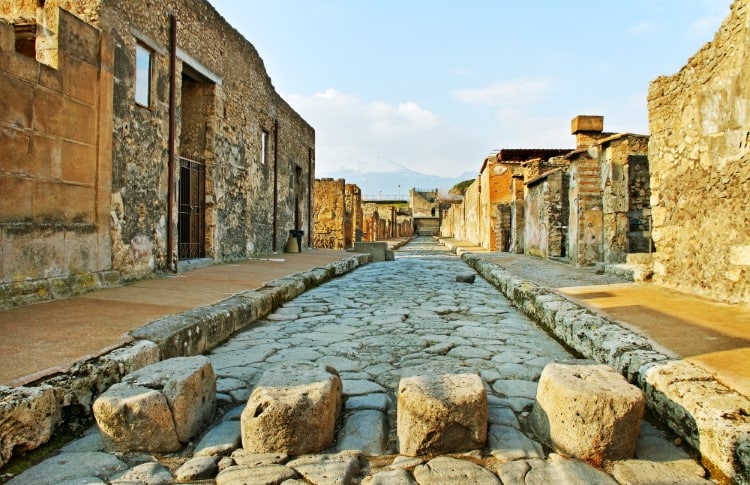Pompeii’s Ancient Roads Had Raised Crosswalks for People to Safely Avoid the Muddy Streets

Photo: Ratikova/Depositphotos
Prior to the eruption of Mount Vesuvius in 79 CE, and consequently being buried under volcanic ash, the ancient Roman city of Pompeii was a thriving place. The vibrant settlement played a critical role in trade; thus, its 15,000 inhabitants lived in impressively modern conditions for the era. When tourists visit the site today, they are able to see the preserved ruins of a well-planned city that accounted for its citizens' needs.
This ancient innovation is particularly evident when looking at how roads were built in Pompeii. One of the most noticeable features on the streets is the series of large raised stones placed in strategic locations. These prominent stepping stones acted as ancient crosswalks. Not only did they allow people to cross the street without touching the water and mud sitting on ground level, but they were also spaced wide enough so that carriage wheels could pass through without issue.
Natural reflectors were also incorporated into some of the roads in the form of small white stones. These paler rocks were set among the larger slabs to help people find their way at night. The moon would reflect on the stones, creating enough light for people to be able to see.
Drainage was also particularly important since most homes in Pompeii had no direct sewer connection. Refuse was washed into the street, making these stepping stones critical. Raised sidewalks with drainage also allowed people to move freely without putting their feet in sewage.
Innovations like these make Pompeii a fascinating place to visit and a wonderful example of ancient Roman urban planning.
Related Articles:
Watch the Final Hours of the Once-Vibrant City of Pompeii
Pompeii’s Fully Preserved Ancient “Snack Bar” Opens to the Public
1,900-Year-Old Ceremonial Chariot Has Been Discovered Near Pompeii
Italian Archeologists Created 100 Plaster Casts of Pompeii Victims Petrified in Ash
READ: Pompeii’s Ancient Roads Had Raised Crosswalks for People to Safely Avoid the Muddy Streets
0 Commentaires